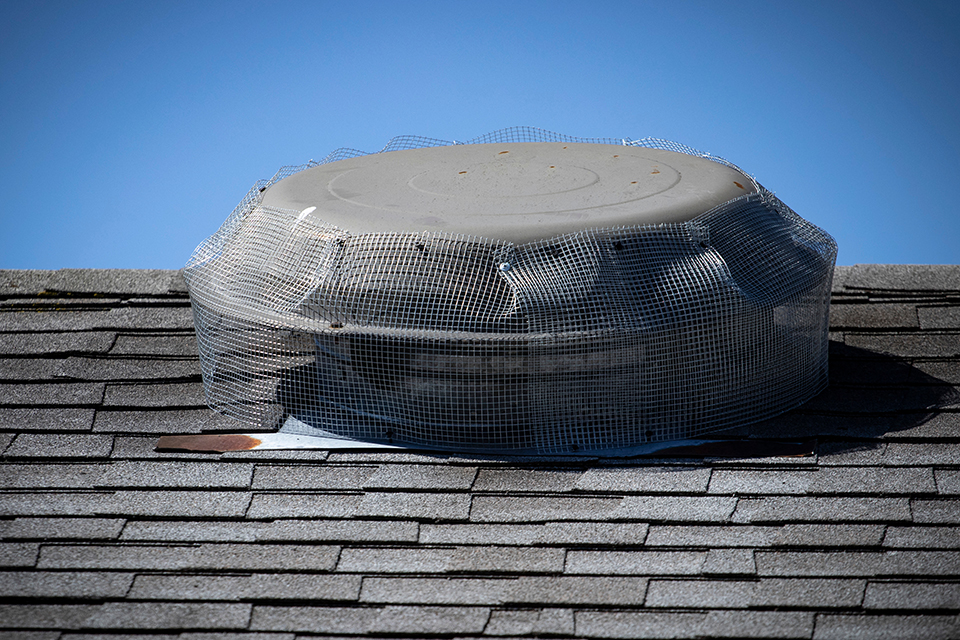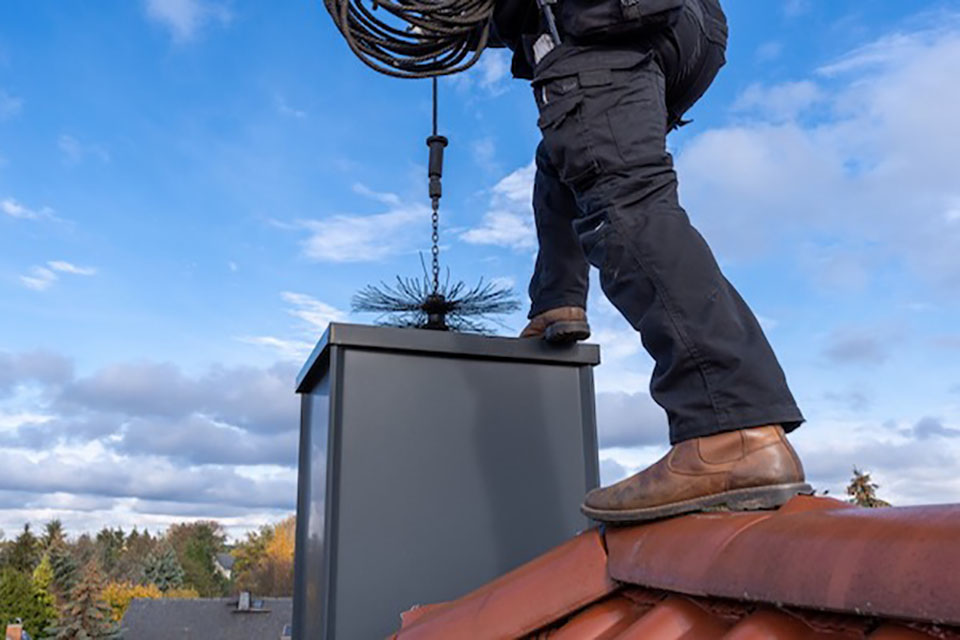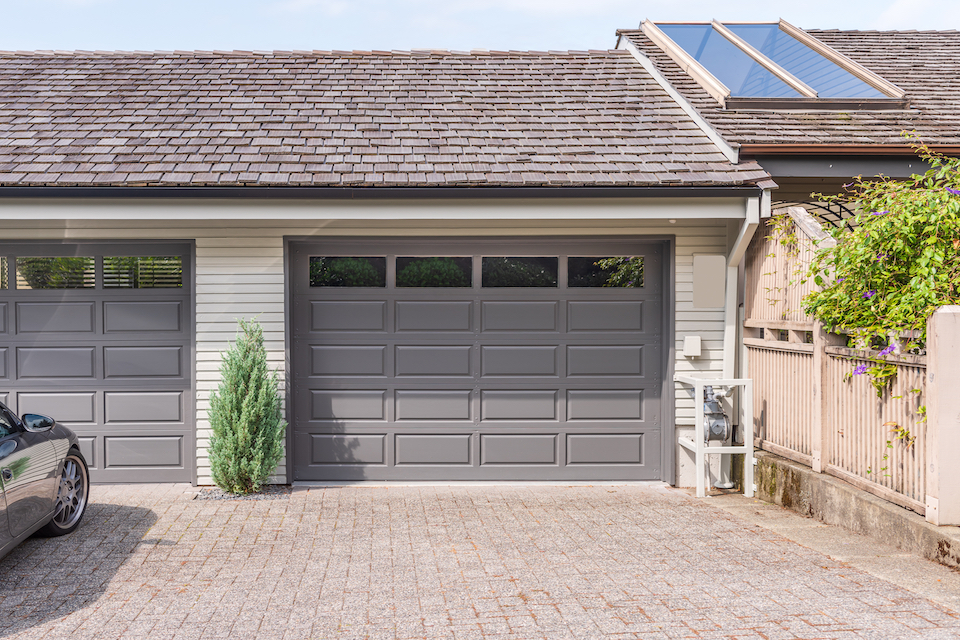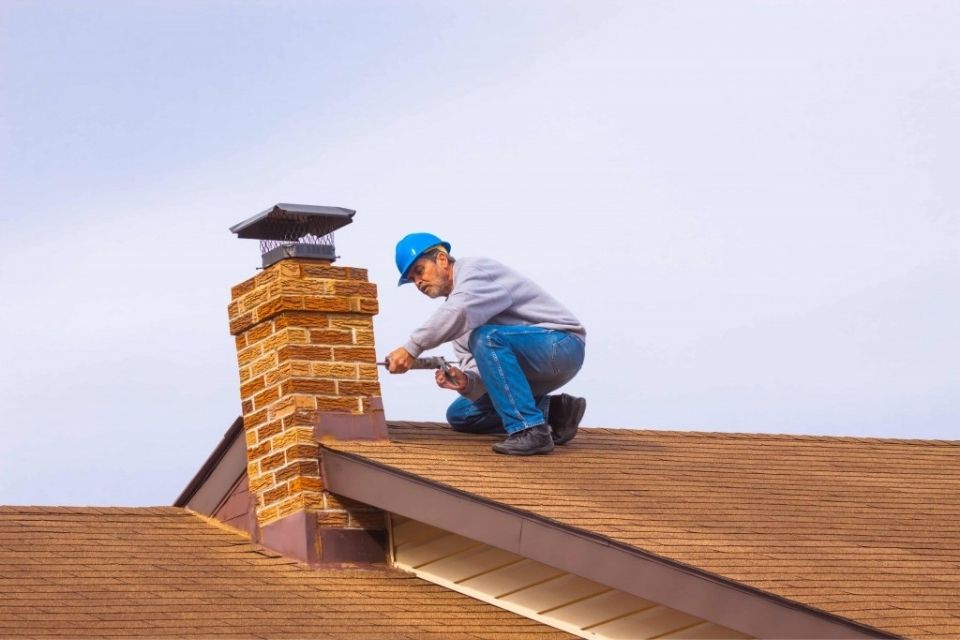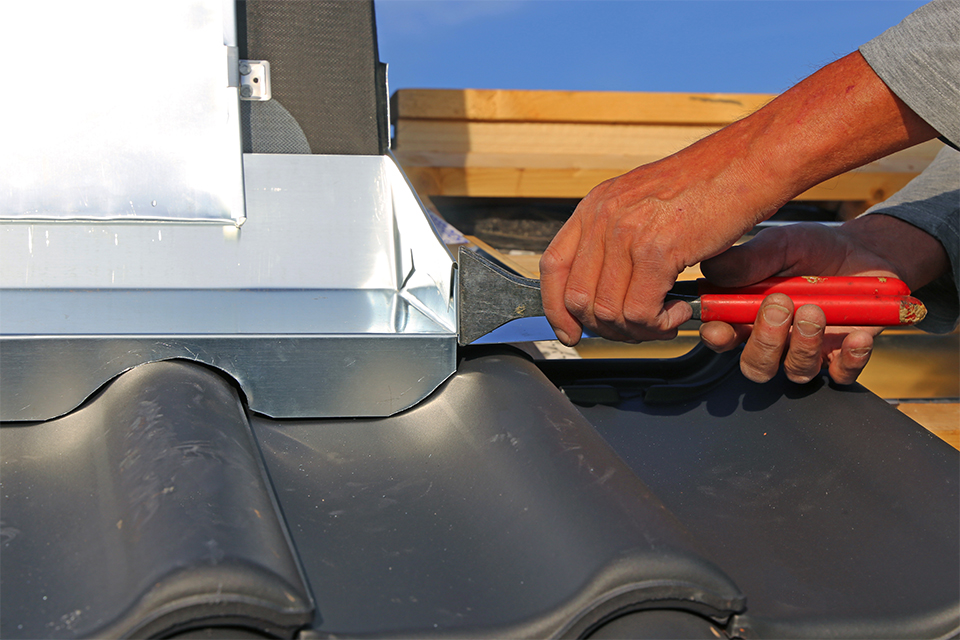How Much Does Roof Vent Installation Cost?
Looking at the roof vent prices for the installation, these costs will depend on the nature of the roof ventilation. There are various types of roof vents and many combinations available.
To have 4 tile vents installed, you’d pay about £375 to £425, whereas the installation of 4 ridge vents costs around £275 to £325.
To have 20 eaves vents fitted, expect to pay between £225 and £275.
It would cost approximately £475 to £525 to fit 4 ridges and 20 eaves vents, and you’d need a budget of £575 to £625 should you wish to have either 4 tiles and 20 eaves vents installed or 4 ridge and 4 tile vents fitted.
Roof Vent Installation Prices
| Type of Fitting | Overall Cost |
|---|---|
| 4 Tile Vents | £300 to £425 |
| 4 Ridge Vents | £220 to £330 |
| 20 Eaves Vents | £190 to £310 |
| 4 Ridge + 20 Eaves Vents | £340 to £410 |
| 4 Tile + 20 Eaves Vents | £490 to £680 |
| 4 Ridge + 4 Tiles Vents | £460 to £640 |
Supply Cost of a Roof Vent Installation
Supply only costs of having a roof vent installed will exclude the price of labour and other expenses, such as any waste removal.
In general, the supply cost of fitting a roof vent makes up about half of the overall cost.
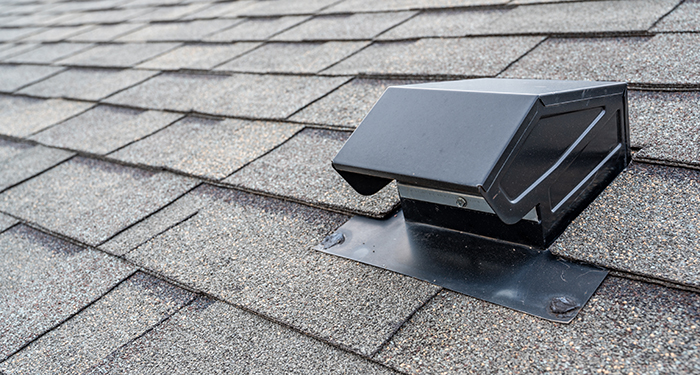
As a result, it would cost around £180 to £220 to purchase four tile vents, £130 to £170 for four ride vents, or £100 to £150 to get twenty eaves vents.
The material costs of four ridge and twenty eaves vents would be about £230 to £270, whereas the standalone cost of four tiles + 20 eaves vents or four ridge and four tile vents would be approximately £280 to £320.
| Type of Fitting | Supply Cost |
|---|---|
| 4 Tile Vents | £180 to £220 |
| 4 Ridge Vents | £130 to £170 |
| 20 Eaves Vents | £100 to £150 |
| 4 Ridge + 20 Eaves Vents | £230 to £270 |
| 4 Tile + 20 Eaves Vents | £280 to £320 |
| 4 Ridge + 4 Tiles Vents | £280 to £320 |
Additional Roof Vent Installation Costs
There are other jobs you may want to have completed at the same time as roof tile vents fitting.
For example, while you have a tradesman looking at your roof, you could ask him to check whether there are other issues, such as:
- Damage to the roof felt or underlay.
- Leaks around chimneys or skylights.
- Blocked or broken gutters.
- Fascias and soffits in need of repair or replacement.
Damaged tiles can also allow water to get into your home and may exacerbate ventilation problems, so it's worth checking whether they need any work at the same time as installing roof vents.
The cost of replacing roof tiles will vary depending on the type and number needed. Replacing a few roof tiles will often start from around £150 to £200.
Tradesmen Cost to Install a Roof Vent
What about the labour cost of having roof vents installed?...
On average, the cost of labour would make up around 50% of the overall cost of having roof vents installed. This equates to around £30 to £40 per hour or approximately £250 to £300 per working day.
Of course, the cost of labour would depend on a range of factors, including where in the UK you are based. The price of hiring professionals can differ from region to region.
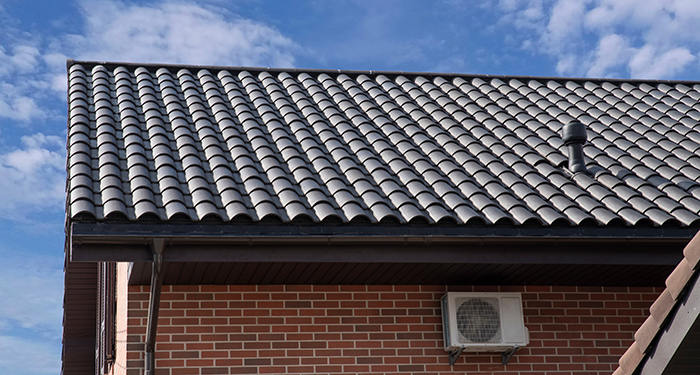
For instance, London and the South East of England tend to have higher labour rates than most of the UK, whereas you'll probably find below-average labour costs in the North of England, Scotland or Northern Ireland.
Other cost factors include the state of the work area, accessibility to the work area, and whether scaffolding is needed.
Roof Vent Installation Timescales
The duration of fitting roof vents can vary greatly:
| Type of Installation | Timeframe |
|---|---|
| 4 Tile Vent | 4-5 hours |
| 4 Ridge Vents | 3-4 hours |
| 20 Eaves Vents | 3-4 hours |
| 4 Ridge + 20 Eaves Vents | 6-8 hours |
| 4 Tile + 20 Eaves Vents | 7-9 hours |
| 4 Ridge + 4 Tiles Vents | 6-8 hours |
As this table shows, 4 ridge vents or 20 eaves vents would take around 4 to 5 hours to install, whereas having 4 ridges and 4 tile vents fitted is likely to last a full working day.
Looking at other timeframes, having 4 tile vents fitted takes about 4 to 5 hours. It takes about 6 to 8 hours to fit 4 ridges and 20 eaves vents, and 7 to 9 hours should you wish to have 4 tiles and 20 eaves installed.
The duration of installing roof vents depends on:
- The size of the area.
- The type of roof vent.
- The accessibility to the work area.
- The state of the work area.
Types of Roof Vents
There is a range of roof vents available, all with their own pros and cons.
Here are the main options you'll come across:
Ridge Roof Vents
One common type of roof vent is ridge vents that are fitted along the ridgeline of the roof.
They are added, along with soffit or fascia vents, to improve airflow into the loft. If the loft space has a room, it's necessary for ridge vents to be installed for the correct airflow.
Pros
- These vents balance out your home’s temperature
- Easy on the eye
- Let air move out of the loft naturally
Cons
- Some risk of water leakage during heavy rain
- Don’t always provide sufficient ventilation in some properties
- Can be more difficult and expensive to install
Tile And Slate Roof Vents
Another option is a tile or a slate roof vent. These options are slightly different.
Looking first at roof tile vents, these are the easier options for installing roof ventilation. Their installation is pretty straightforward, with one vent used to replace one tile.
The good news is you can purchase roof tile vents that match the colour of the existing roof tiles on your property, so that the new vents won’t appear unsightly.
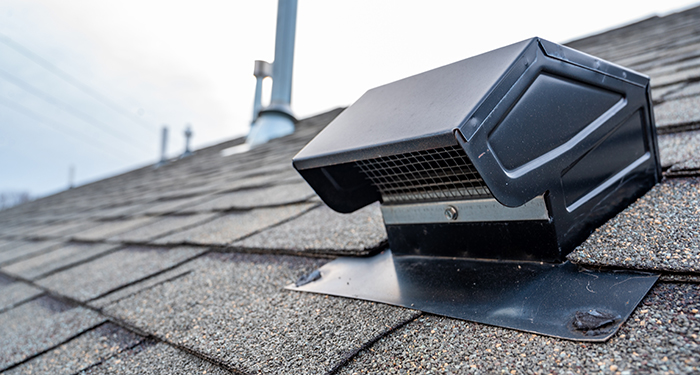
Roof tile vents can come with a pipe adaptor fitting that would allow you to establish a connection for soil vent pipes and bathroom extractor fans.
Moving on to slate vents, these are used to be installed in place of existing roof slates. While they are generally made of plastic, it's possible to purchase vents made from real slate.
They feature a grille under the base, enabling air to flow through the vent and out beyond the roof. Slate vents tend to be suitable for fitting a pipe adaptor; again, this can enable a connection for soil vent pipes and bathroom extractor fans.
Pros
- Easy to fit
- Can seamlessly blend in with the overall appearance of your roof
Cons
- Have to be fitted from the outside
Eaves Roof Vents
Eaves vents are also known as soffit vents. They are fitted beneath the eaves of a roof where it extends beyond the warm wall line.
When combined correctly with other roof vent technology, soffit vents enable the right airflow for your attic.
The two types or sub-categories of eaves/soffit vents are: continuous and individual. The former has become a more popular choice recently since they allow more fresh air to enter a loft space than do individual soffit vents.
Individual soffit vents still have reasons for being considered, as they are a solid option for problematic areas like partitioned lofts, hot bedrooms or kitchens.
Among the downsides of eaves vents is that moist air may gather beneath the soffits, which in turn would hinder the capacity of these vents to function properly. This brings with it the risk of roof damage as well as risking damage to the siding and under eaves.
Pros
- Low maintenance costs
- Generally easy to fit
Cons
- Moist air could accumulate beneath your soffits
Other Options
While we’ve looked at some common examples above, there are other loft vents on the market that may or may not be well-suited to your property and situation.
Here are some additional options:
- Flat roof vents
- Over fascia vents
- Box vents
- Hard-wired powered loft vents
- Solar-powered loft vents
Speak to your roofer to find out which type of roof vent is best for your home.
Cost to Replace Roof Vents
Replacing a roof vent with either new vents or new slates/tiles (if suitable and safe) will likely take several hours.
However, as with installing roof vents for the first time, it will depend on a variety of factors, such as how many roof vents are being replaced.
The average cost of a roof vent replacement would be somewhere in the range of £400 to £700 should you wish to have new roof vents installed or £350 to £600 to add new tiles in place of roof vents.
The above costs assume that several roof vents are being replaced. Simply replacing one roof vent would be noticeably less expensive.
You may wish to replace roof vents because the existing ones are unsightly, have worn down to the point that a replacement is a better choice than repairs, or to have higher quality roof vents installed.
On the other hand, you may no longer have a need for roof vents, so you would rather have new slates/tiles fitted in their place. Of course, it's essential to make sure that this is a safe option before availing of it.
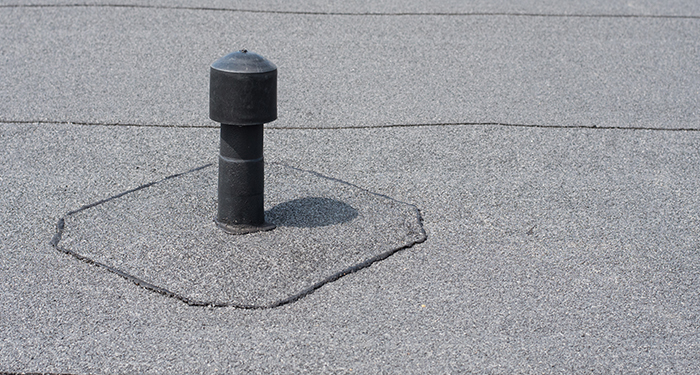
You need to be sure that the vents really are no longer necessary. If in doubt, consult a professional.
In most cases, you could take the old roof vents to a waste management facility for disposal. However, it can depend on the material in question. Contact your local waste management facility for advice if you're uncertain.
Waste removal costs will be minimal unless you have a large number of roof vents to dispose of.
FAQs
Q: How do roof vent tiles work?
A: These loft vents are installed in place of existing roof tiles. These tiles feature a grille vent in the top cover for airflow purposes.
Rainwater can enter the vent and flow out via the bottom, whereas there is an under-base for airflow between the attic and the outside. Beyond that, these vents come with a simple connection point for a piper adaptor.
As mentioned, adding a pipe adaptor can allow you to create a connection between soil vent pipes and bathroom extractor fans. Overall, this is how a roof vent tile works, but the exact process and qualities of a roof vent tile can vary from product to product.
Q: What is the best material for a roof type vent?
A: Plastic vents are generally considered a better option than metal vents since the former come with smooth, rounded edges (meaning they are less dangerous to work with during installation).
They are also lightweight, so should they fall off, they’re less likely to cause damage if they strike any objects below.
Q: Is it possible to have too much ventilation for a loft space?
A: Yes, absolutely. If the ventilation fitted is not suitable for your roof/loft, then it can actually work against the different vents already on your roof. So, it’s important that you choose the right options.
Q: What can happen if you don’t vent your loft?
A: Failure to properly vent an attic can result in several issues, with moisture being the biggest concern. If you fail to vent your loft correctly, warm, wet heat will stick around and use up space in your attic.
Moisture can, in turn, result in various problems such as mould, mildew and rotten timber.
Q: How much loft ventilation do I actually need by law?
A: Based on the building regulations, if a property is under ten metres in width and the roof pitch is 35° or greater, then 5mm ridge ventilation is needed along with 10mm eaves ventilation.
Depending on the size and pitch of the roof, extra ventilation may be needed.

